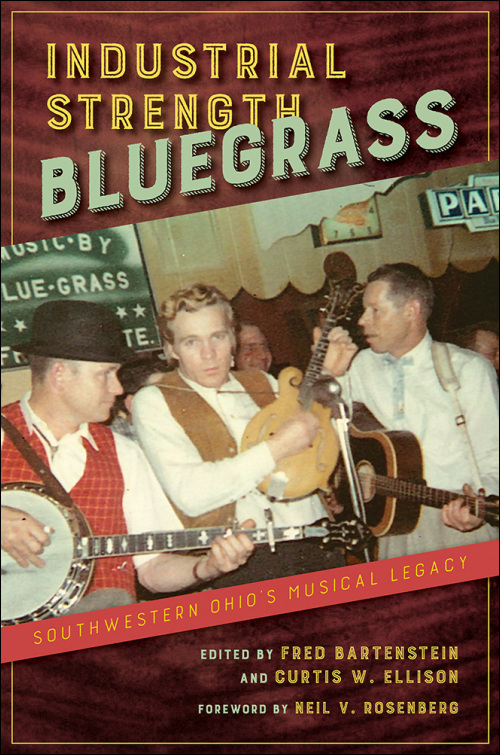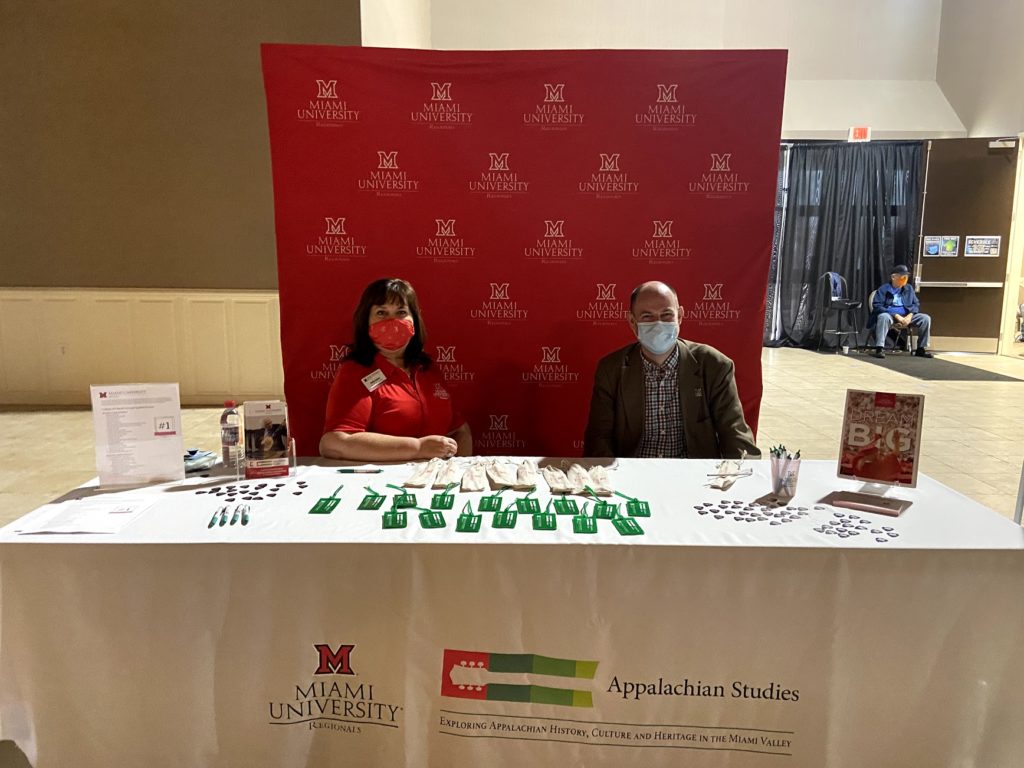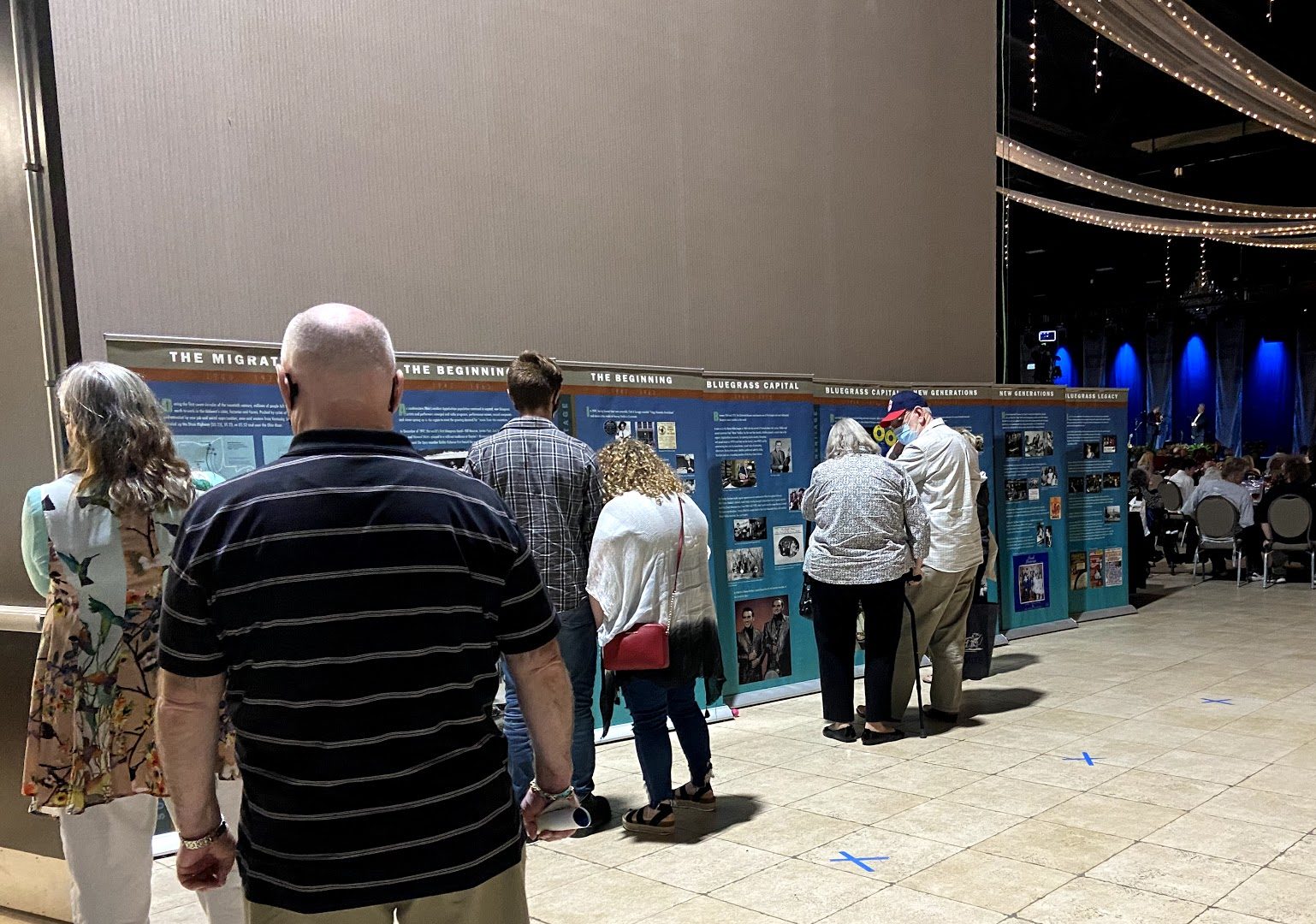The Urban Appalachian Community Coalition has always been committed to promoting both music and scholarship as essential components of culture and history. With the publication of Industrial Strength Bluegrass: Southwest Ohio’s Musical Legacy, edited by Fred Bartenstein and Curtis Ellison, both music and scholarship are bound into one stunning project.
With the University of Illinois Press release of Industrial Strength Bluegrass and its companion recording, we have major contributions to scholarship in the area of Appalachian studies with particular emphasis on the role of urban Appalachians in Southwest Ohio. Part of the purpose of this project was to finally assemble a comprehensive study of the musical legacy of Southwest Ohio. Co-editor Fred Bartenstein, a historian of bluegrass, points out that “the book tells something of an unknown story. People know that New Orleans gave us jazz, that Chicago is the home of the blues, and Nashville is the heart of country music; what people do not know is that Southwest Ohio is the center of bluegrass for the world.” It was here in Southwest Ohio that what we now know as bluegrass, as a musical form known around the world, took off as a cultural phenomenon beyond Appalachia.
Joe Mullins, producer of the companion recording and an accomplished bluegrass musician himself, points out that “Southwest Ohio was and remains one of the largest markets for Bluegrass and Hillbilly music in the world.” The cultural influence of Appalachians in our region and around the world cannot be underestimated. We now have a document that explains the rise and explosion of bluegrass that came from our corner of the globe.

Fred Bartenstein explains that the origin of the book is in the title itself. During the industrial era, which Bartenstein locates as 1947-1989, the mass of industries that sprung up throughout Southwest Ohio actively recruited workers from the Appalachian regions. They focused especially on Eastern Kentucky and Tennessee, Eastern Ohio, and West Virginia. Once the migration from the coal regions of Appalachia began, a flood of people migrated to Southwest Ohio and brought their music with them. It was industry that brought them here and, as Fred says, they made “music that was notably muscular.” Thus we have industrial strength bluegrass.
Curt Ellison, co-editor of the book, told me how the project came into being. Ellison and Bartenstein had discussed the idea of putting together a book on the history of bluegrass in the region. Fred Bartenstein and Ellison, Professor Emeritus of Appalachian Studies at Miami University, bring years of study and personal memory to this project. At a 2016 conference on country music culture, he and Bartenstein decided the time was now to pull this project together. Ellison explains: “We created a lecture series of people who could speak to the social and musical history of bluegrass in the Southwest Ohio region.” Part of the agreement with their speakers was that each would submit a manuscript of the lecture that could be turned into a book chapter. With special live music performances to accompany the lecture series, they attracted the attention of Joe Mullins who also contributed to the book.
When I spoke to Mullins, he gave me some of the background for the music recording that now accompanies the book. Mullins is an accomplished bluegrass musician and broadcaster, and his own father was one of those who played a crucial role in putting bluegrass at the center of the popular imagination in the 1960s. Mullins described being involved with this project as “a life-time labor of love.” Mullins put together some of the best talents in country and bluegrass to record songs that had their origins in Southwest Ohio. These songs were either written here or recorded here, and the new recording honors the legacy of all the great bluegrass players who began in this region and brought bluegrass to the entire world. Mullins says that Southwest Ohio is still a center for bluegrass music and culture: “People still come to this area for the opportunities that exist for bluegrass musicians.” The recording honors the music, musicians, and the Appalachian people who brought it all to the region.
Fred Bartenstein emphasized this last point, saying: “The real immediacy behind the book and the recordings is to get this out and give people some credit while they are still alive.” The history of Appalachian people in Southwest Ohio and the cultural impact of these people has spread across the region and the country. Industrial Strength Bluegrass is not just a document of local cultural history, it is a document of America. The centrality of Southwest Ohio to all of this is crucial to the story, and Curt Ellison makes it clear that “this project makes these facts known and appreciated.”
In March, Miami University Appalachian Studies sponsored the launch of the Smithsonian Folkways album with the help of the Ohio Arts Council, Middletown Community Foundation, the W.E. Smith Family Fund, the Appalachian Community Development Association (ACDA), and generous private donations. The audience enjoyed an eight-hour jamboree at the Roberts Center in Wilmington, Ohio, with full sets by Joe Mullins and the Radio Ramblers, the Isaacs Family, Rhonda Vincent and the Rage, and the Caleb Daugherty Band (all album contributors). Fred Bartenstein and Curt Ellison shared historical anecdotes through the musical intermission. The family motif repeated in the ages of the performers, ranging from the youngest members of the Isaacs Family—the third generation of that band—to eighty-six-year-old Bluegrass Hall-of-Famer Paul Williams, who celebrated his birthday singing on stage. Appropriately, the haunting gospel number “Family Reunion” served as a highlight from the evening, showcasing the vocal talents of Caleb Daugherty and Rhonda Vincent, the Queen of Bluegrass.

Matthew Smith, Director of Appalachian Studies at Miami University’s Hamilton and Middletown campuses, said, “Bluegrass in Ohio is as much about family as anything. If this sounds hokey, then the reality was on plain view at the Roberts Center.”
Industrial Strength Bluegrass: Southwest Ohio’s Musical Legacy, both the book and the recording, are major contributions to the field of Appalachian Studies. These works provide a view of the urban Appalachian experience that reveals the story of Appalachian migration, the influence of Appalachian culture in areas like greater Cincinnati and takes us up to the present ways that Appalachian culture still impacts the region and the world beyond. The Urban Appalachian Community Coalition puts tremendous emphasis on research that documents and promotes Appalachian culture and history. Work of the order of Industrial Strength Bluegrass stands out as a powerful testament to the contributions of Appalachian people to the cultural history of Southwest Ohio.
Industrial Strength Bluegrass: Southwest Ohio’s Musical Legacy is available from the University of Illinois Press: https://www.press.uillinois.edu/books/catalog/84mpe8sf9780252043642.html.
The recording Industrial Strength Bluegrass: Southwest Ohio’s Musical Legacy is available from Smithsonian Folkways at: https://folkways.si.edu/industrial-strength-bluegrass.
A link to the liner notes for the recording can be found here: https://folkways-media.si.edu/liner_notes/smithsonian_folkways/SFW40238.pdf.
Mike Templeton is a writer, independent scholar, barista, cook, guitar player, and accidental jack-of-all-trades. Check out his profile in UACC’s new Cultural Directory. He lives in downtown Cincinnati with his wife who is a talented photographer. They spend their free time walking around the city snapping photos. She looks up at that the grandeur of the city, while Mike always seems to be staring at the ground.

